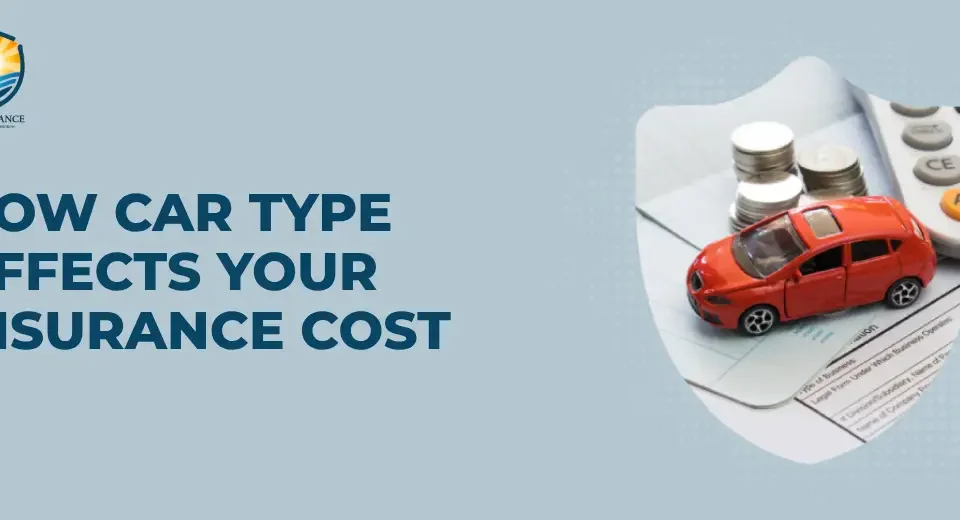Types of Auto Insurance Coverage Explained

How Does Car Insurance Work in Simple Terms?
April 17, 2025
What Happens If Your Car Gets Stolen Without Insurance? (2025 Guide)
April 18, 2025Choosing the right type of auto insurance coverage isn't just a formality — it directly impacts my financial security if an accident, theft, or unexpected damage happens. By understanding each coverage type, I can make smarter choices and avoid paying out-of-pocket for things my policy could handle.
In this guide, I’ll break down the main types of auto insurance coverage clearly and simply, helping you feel more confident when selecting your protection.
What are the Major Types of Auto Insurance Coverage?
Choosing the right auto insurance starts with understanding what each coverage type protects. Here’s a quick breakdown to help you make smarter decisions.

1. Liability Insurance (Bodily Injury and Property Damage)
Liability insurance covers damages you cause to other people or their property. It’s legally required in most states for all drivers.
Example: If you hit another car and damage it, liability insurance pays for the repairs and medical costs.
2. Collision Coverage
Collision coverage pays for damage to your car after an accident, regardless of fault. It’s especially important if your car is new or valuable.
Example: You crash into a tree or another vehicle, and collision coverage helps repair your car.
3. Comprehensive Coverage
Comprehensive coverage protects against non-collision events like theft, vandalism, fire, or natural disasters. It’s ideal for protecting your car from unexpected risks beyond accidents.
Example: Your car gets damaged by a hailstorm or is stolen.
4. Personal Injury Protection (PIP)
PIP covers medical expenses for you and your passengers after an accident, no matter who caused it. It’s required in some states with no-fault insurance laws.
Example: After a crash, PIP helps pay for hospital bills and recovery costs.
5. Uninsured/Underinsured Motorist Coverage
This coverage protects you if you’re hit by a driver who has no insurance or too little coverage. It ensures you’re not left paying for damages someone else should have covered.
Example: An uninsured driver hits your car, and this coverage pays for your injuries and repairs.
Optional or Add-On Coverages
Sometimes basic coverage isn’t enough, optional coverages can offer extra peace of mind depending on your situation.
1. Gap Insurance
Pays the difference between your car’s actual value and what you still owe on your loan if the vehicle is totaled.
2. Rental Reimbursement
Covers the cost of a rental car while your vehicle is being repaired after a covered accident.
3. Roadside Assistance
Provides help with towing, battery jump-starts, flat tires, and lockouts when your car breaks down.
4. Mechanical Breakdown Insurance
Covers major mechanical repairs not related to accidents, like engine or transmission failures.
How to Choose the Right Coverage Types for You?
Not every driver needs the same coverage — it depends on your car, location, and personal needs.
- Value and Age of Your Car: New or expensive cars may need collision and comprehensive coverage, while older cars might not.
- State Legal Requirements: Some coverages, like liability insurance, are mandatory in most states.
- Personal Risk Tolerance: Consider how much risk you’re willing to take versus paying higher premiums for more protection.
- Financial Situation: Choose a deductible and coverage that won’t strain your finances if you need to file a claim.
Example: A new car owner often benefits from full coverage, while someone with an older vehicle may only carry liability insurance.
Frequently Asked Questions
What’s the difference between collision and comprehensive coverage?
Collision covers damage from accidents, while comprehensive covers non-collision events like theft, fire, or weather damage.
Is liability insurance enough?
Liability only covers damage to others, not your car. Full coverage offers better protection, especially for newer vehicles.
Should I get uninsured motorist coverage even if it’s optional?
Yes, it protects you if you're hit by a driver without insurance or with insufficient coverage.
What does $100k/$300k/$100k mean in auto insurance?
It means $100,000 coverage per person for injuries, $300,000 per accident, and $100,000 for property damage.
When should I get liability vs. full coverage?
If your car is new or valuable, full coverage makes sense; for older, lower-value cars, liability might be enough.
When should I drop comprehensive or collision coverage?
You might drop it when your car’s value is so low that the cost of coverage exceeds the potential payout.
Conclusion
Choosing the right auto insurance starts with understanding all the available coverage types and what they protect. The more informed you are, the better you can match coverage to your specific needs without overpaying.
Take a moment to assess your situation carefully, and if you're ready, fill out a quick form on felifeinsurance.com to get a free personalized quote today!




